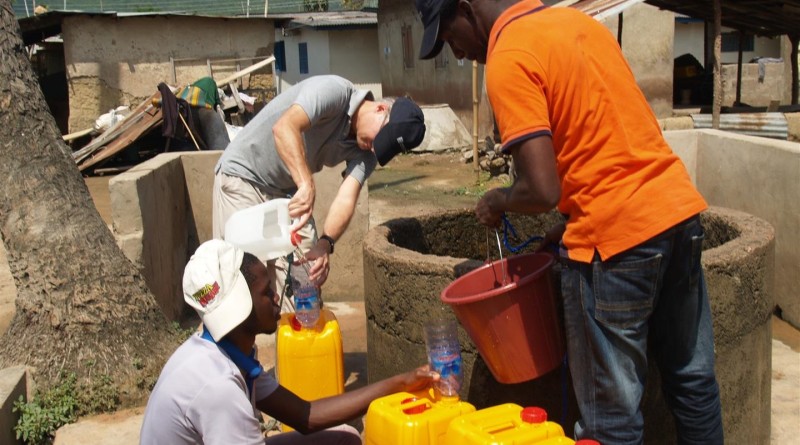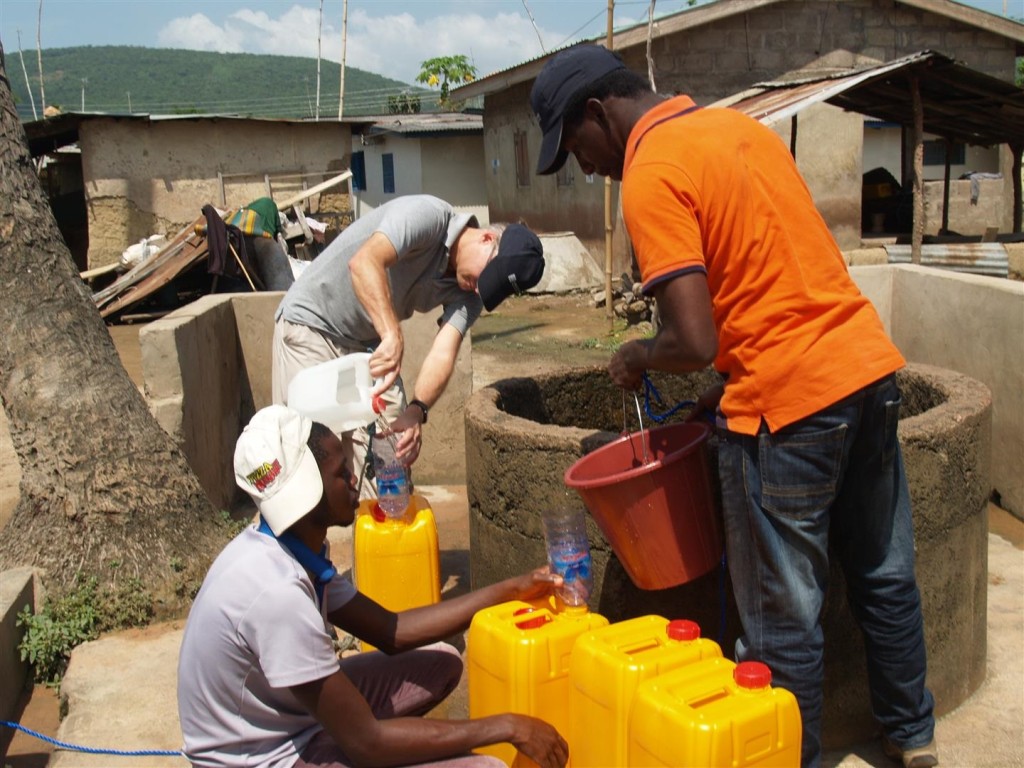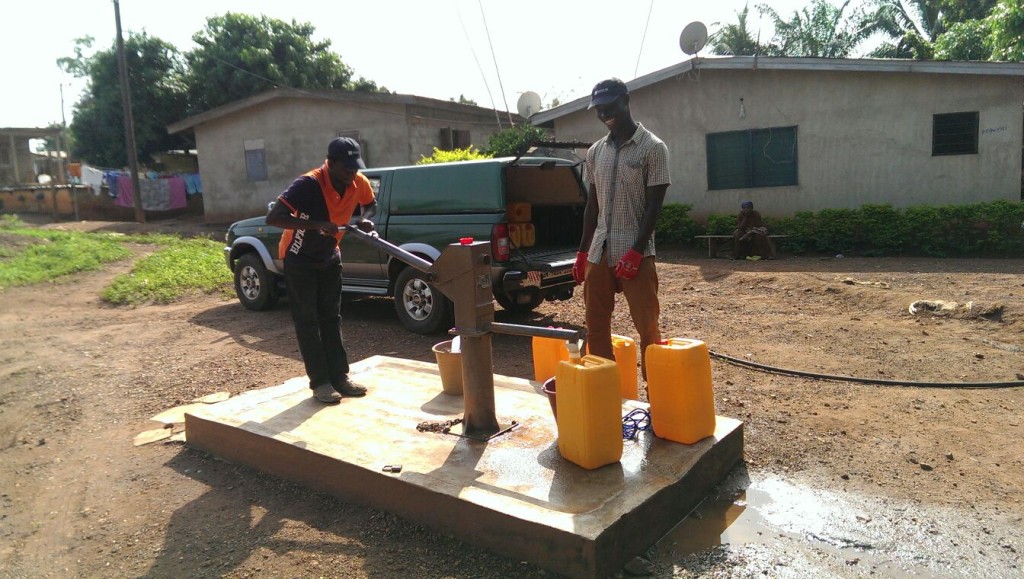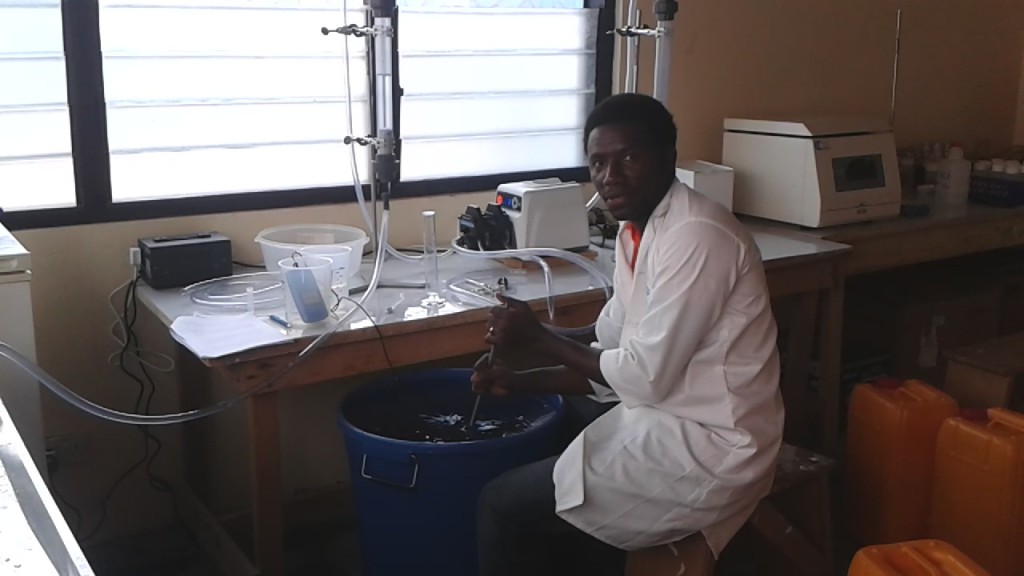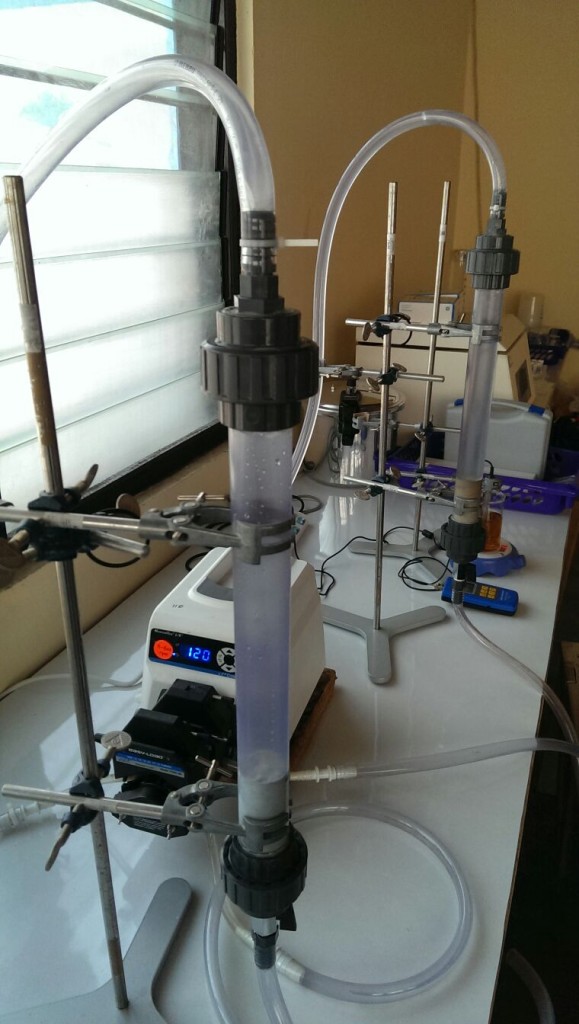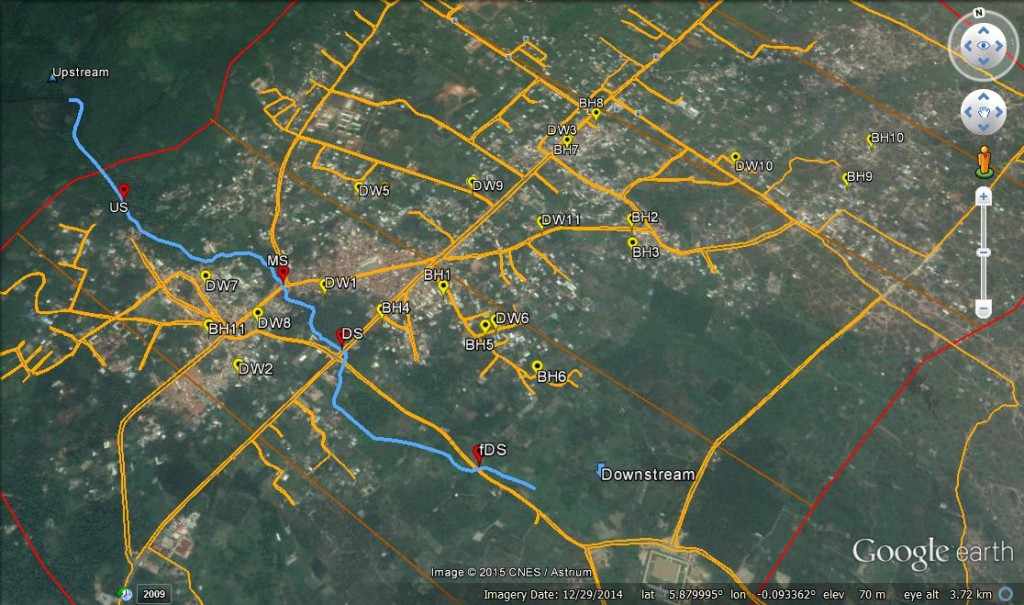Concentrating samples for pathogen transport tests in Dodowa, Ghana
By Jack van de Vossenberg
Early November 2015 Alimamy Kamara, George Lutterodt and Jack van de Vossenberg set up a ‘field lab’ within one week in Dodowa. We used the lab for the processing of groundwater samples so that we can assess the population of viral and bacterial pathogens. We concentrated large volumes of water for the detection of viruses, and we concentrated smaller volumes for bacteria.
We started with processing of the first samples on 16 November. The samples were taken from dug wells, boreholes and the humble Dodowa river. To obtain enough material for virus sampling we did not take a risk, so we decided to filter 100 litres of water from wells and boreholes, while we anticipated that 10 litres would be sufficient for river water. For bacteria we only needed 100 millilitres of sample. We were eager to find out if our plan to concentrate 100 litres of water from a well would work, so immediately the very first day we took that challenge. And it worked! Over the next month we took more than 50 samples for viruses and 50 samples for bacteria.
Virus concentration was done with the U.S. Environmental Protection Agency (EPA) glass wool filtration protocol. Because the method only works if the sample has a low pH we needed to add loads of hydrochloric acid, which we mixed in a large bucket. In the end the whole volume was concentrated to a mere 10 millilitres, a concentration of 10-thousand times!
Bacteria concentration was much simpler: just squeezing 100 millilitres through a membrane filter was sufficient.
The concentrated virus samples and the bacteria-containing filters were frozen and shipped to UNESCO-IHE where they will be analysed.
The field lab is part of a house in which the project also has a spacious meeting room to work and to organize discussions, presentations, community meeetings, etc.
Well sampling
Borehole sampling
Alimamy mixing groundwater with acid in the lab in Dodowa, please note the large bucket for mixing
Columns for virus concentration at the start (front) and at the end of the run (back)
Map

